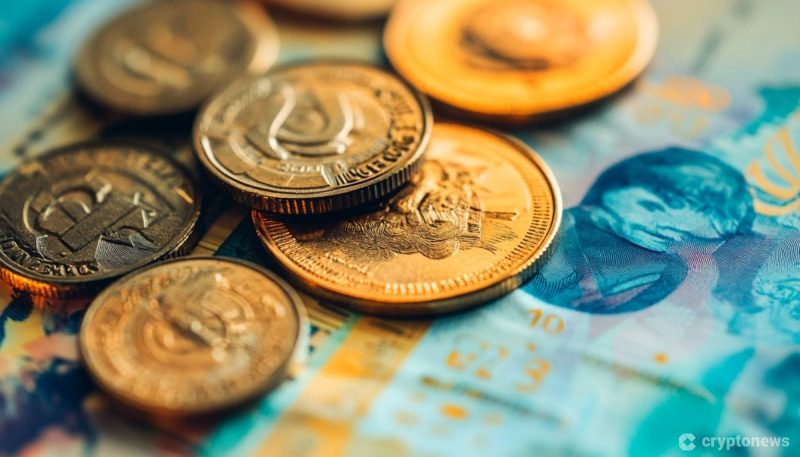Brazil’s top cryptocurrency exchanges — Mercado Bitcoin, Foxbit, and Bitso — have joined forces to launch BRL1, a Brazilian real-pegged stablecoin (R$1 = 1 BRL1).
According to a local source, this new digital asset is designed to simplify cryptocurrency transactions between platforms without requiring traditional banking intermediaries.
The project is set to be a step towards integrating blockchain technology into Brazil’s financial ecosystem, offering users a faster, more efficient way to manage crypto investments while potentially transforming the country’s payment systems.
The BRL1 stablecoin will be backed by Brazil’s National Treasury bonds and will be available later this year, with an initial issuance of R$10 million.
The consortium expects the stablecoin to reach a trading volume of 100 million BRL1 within a year and further aims to integrate it into the Central Bank of Brazil’s Drex system in the future.
Brazil’s Real-Pegged Stablecoin BRL1: What Is It?
One of the primary goals of BRL1 is to facilitate seamless transactions between crypto exchanges without the need for traditional financial intermediaries, such as banks or payment platforms.
Currently, users must initiate transfers through systems like Pix to move funds between different exchanges. With BRL1, this process becomes significantly faster, allowing direct transactions between accounts on different platforms.
For example, under the current system, an investor looking to trade Bitcoin on Mercado Bitcoin (MB) and Ethereum on Foxbit would need to process multiple Pix transactions through their bank.
With BRL1, these transactions can be completed directly on the crypto platforms, reducing the time and complexity involved.
This innovation is expected to benefit everyday users who primarily deal in reais but have lacked digital currency options outside the traditional financial system.
Fabrício Tota, Director of New Business at Mercado Bitcoin, explained,
“The introduction of a real-pegged cryptocurrency helps bridge the gap between Brazil’s traditional financial system and the evolving crypto market. By offering a real-denominated digital asset, we bring more opportunities for local users to engage with crypto while maintaining their connection to familiar currency systems.”
Tota added that BRL1 is a step forward in reaching common users, addressing friction between fiat and crypto systems.
Notably, the crypto community are rejoicing following the unbanning of X in Brazil.
Future Integration with Drex
The stablecoin’s liquidity will be provided by Cainvest, the largest liquidity provider in Brazil’s institutional cryptocurrency market.
Additionally, its tokenization and custody technology will be powered by Fireblocks, a global leader in digital asset security.
These collaborations ensure that BRL1 will offer both transparency and security for users, with the reserves backed by Brazil’s National Treasury bonds and fully audited.
In the future, the consortium plans to pass on part of the bond income generated from these reserves to BRL1 holders, though the specific terms will be determined later.
The consortium behind BRL1 envisions integrating the stablecoin with the Central Bank of Brazil’s Drex system, this would expand its use beyond cryptocurrency trading to include investment tokens, loans, and other digital assets.
As Ricardo Dantas, CEO of Foxbit, also emphasized,
“The BRL1 stablecoin has the potential to bring ‘open crypto finance’ to the end user, leveraging the blockchain ecosystem to create a more inclusive, accessible, and efficient financial system.”
The consortium has also expressed interest in expanding BRL1’s reach beyond Brazil. Several international exchanges have already shown interest in listing the stablecoin, positioning it as a tool for cross-border payments.
Notably, the Central Bank of Brazil (BCB) has selected 13 themes for the second phase of its CBDC pilot programme, Drex. While Visa is also launching a global stablecoin sssuing platform for banks.
The post Crypto Platforms Support Brazil’s Real-Pegged Stablecoin BRL1 Set for Launch This Year appeared first on Cryptonews.


